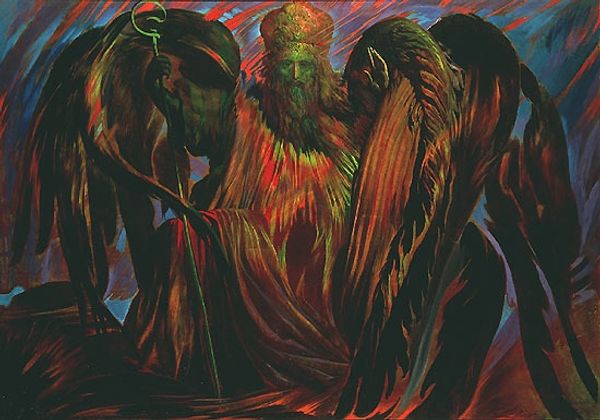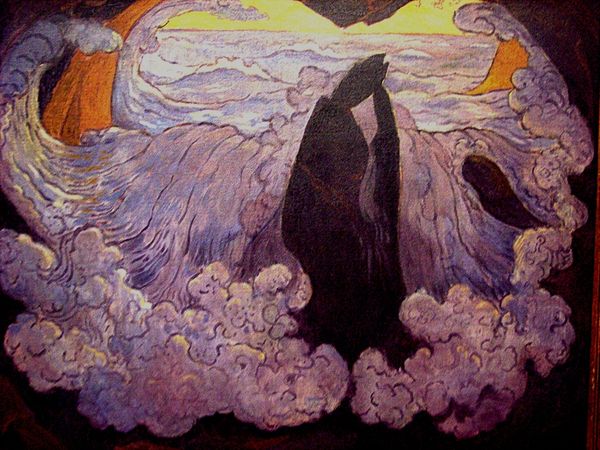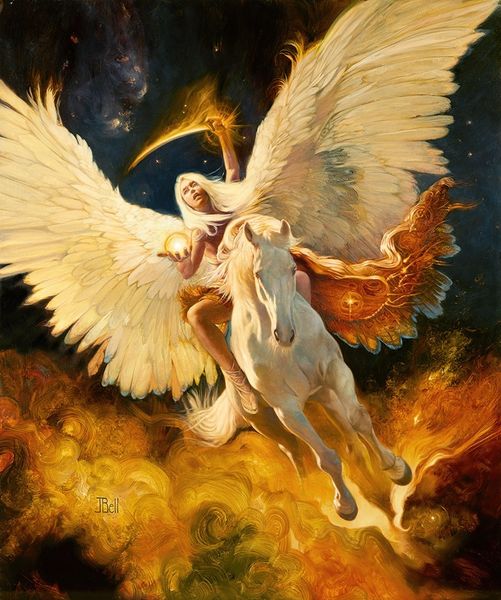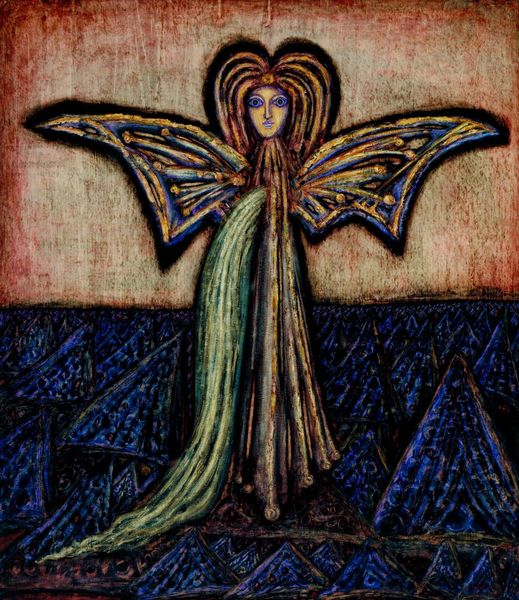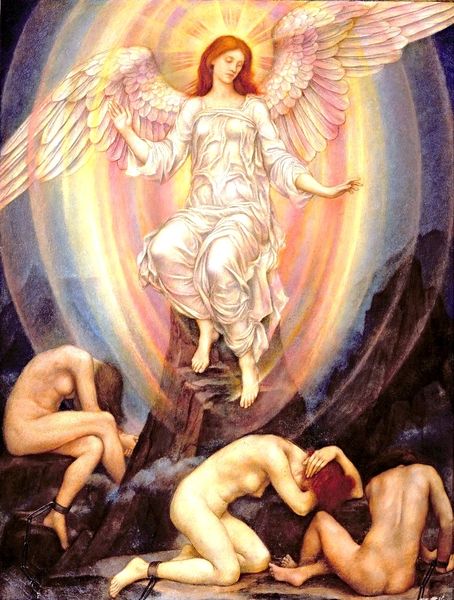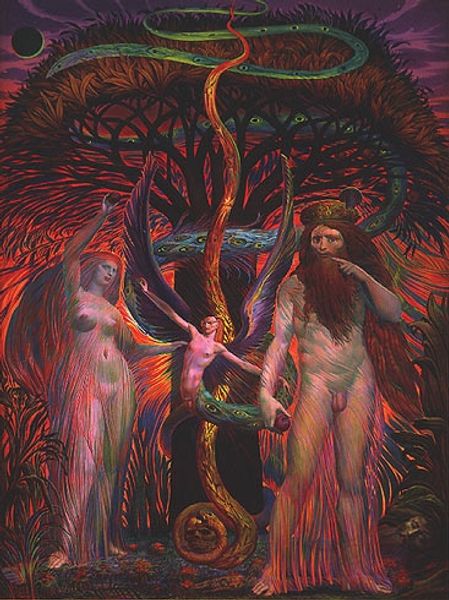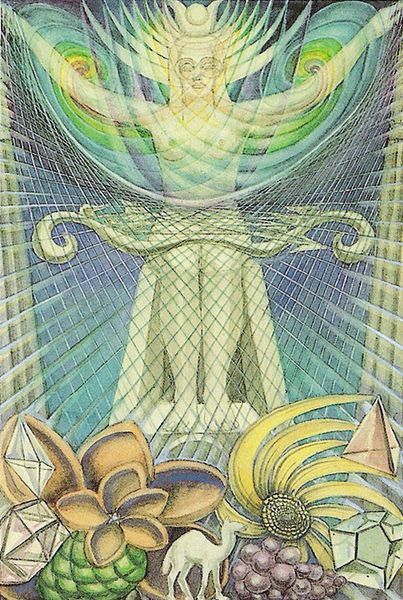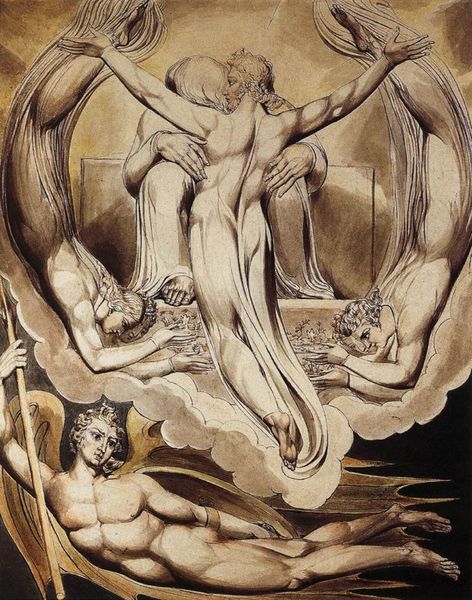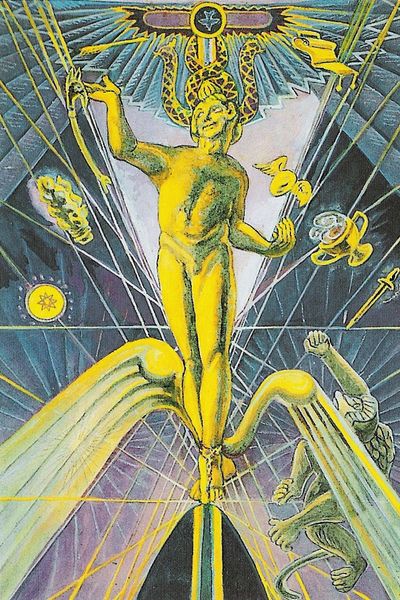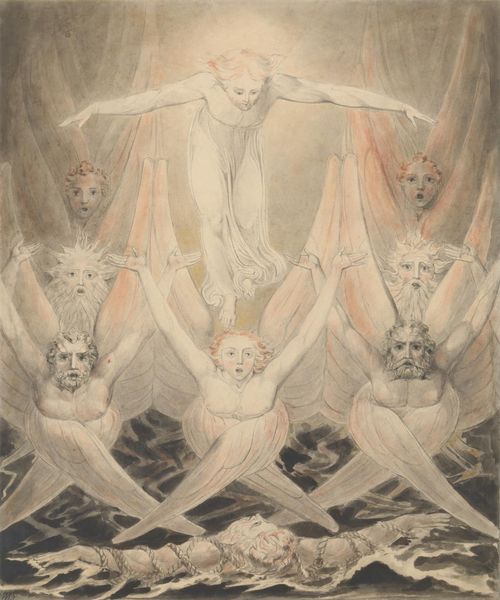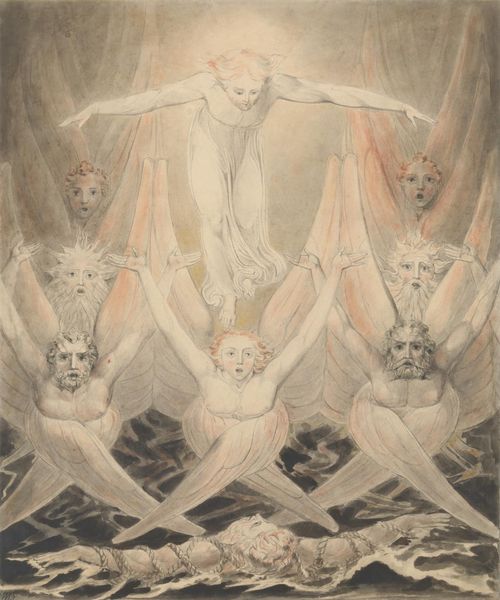
#
abstract expressionism
#
naturalistic pattern
#
abstract painting
#
geometric pattern
#
fluid art
#
abstract pattern
#
neo expressionist
#
abstract art
#
pattern in nature
#
expressionist
Copyright: Ernst Fuchs,Fair Use
Editor: Ernst Fuchs’s "Icarus on Cothurni" from 1978 certainly makes an impression. There’s something dramatic about this winged figure against such a fiery background. What symbols or stories do you see woven into this piece? Curator: The title itself is a key. Icarus, of Greek myth, fused here with the "Cothurni," the elevated boots of the tragic stage. This immediately layers a sense of impending fall, doesn't it? What emotions does that combination of hubris and impending tragedy stir in you? Editor: Definitely a feeling of being doomed from the start. Icarus’s story is all about flying too close to the sun and this figure looks both powerful and vulnerable. The red background certainly suggests heat and danger. Curator: The choice of Icarus, combined with the theatrical boots, becomes a potent symbol of the artist's exploration into the dangers of ambition and the theatricality of life. Consider how often wings in art symbolize spiritual aspiration. Editor: I do find the juxtaposition of soaring ambition, represented by Icarus's wings, with the heavy Cothurni boots, incredibly powerful. The inevitable downfall feels heavier somehow. Curator: Exactly. It transcends just the literal fall. It delves into the psychological weight of knowing the consequences even as we strive for something grand, something potentially unattainable. Notice the upward gaze as well, it reinforces that hope but the end seems inescapable. What an amazing cultural memento. Editor: Seeing those layers of meaning really deepens my appreciation. Thank you, it adds such resonance! Curator: My pleasure! Remembering that every symbol contains its own story is an important step.
Comments
No comments
Be the first to comment and join the conversation on the ultimate creative platform.
